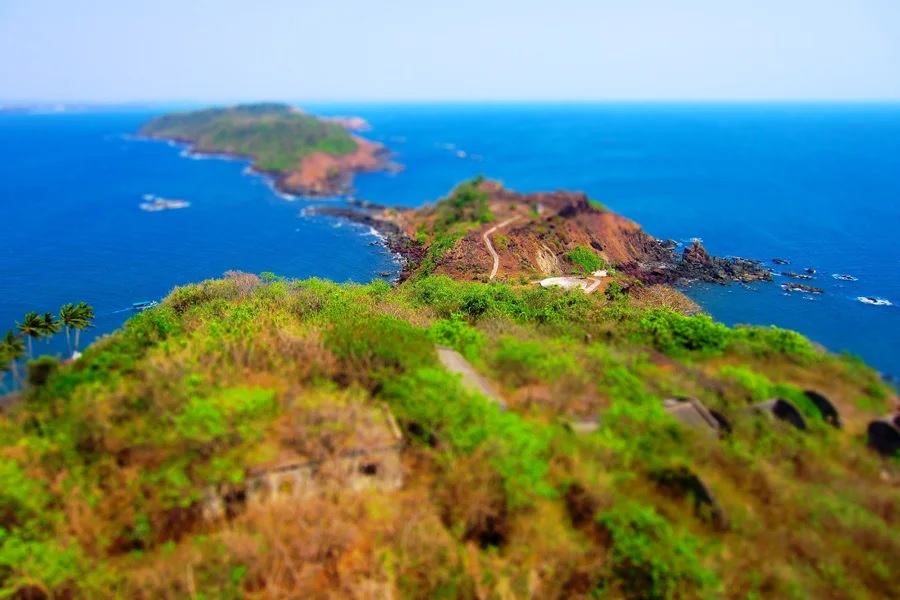Geo-tourism would be an eye-opener since Goa has a lot to offer for discerning and nature-loving people

(HEAD)
It is an accepted fact that Goa is a paradise and popular among domestic and international tourists.
Most tourist sites can be covered in 3-4 days with visits to beaches, temples, churches, lakes, waterfalls, spice gardens, and other locales. Ecotourism is a fledgling sector but may take off in a big way. Cruise tourism could become popular now that the national coastal cruise circuits have commenced while spiritual, cultural and wellness tourisms are being planned.
To the above list, could be added “geo-tourism” which would entail going to places of geological interest. Geo-tourism could cater to rockhounds, those keen to know the geological evolution of Goa, sites of fascinating geological formations – hinterland and along the coast – and to enjoy trekking along serene and verdant nature trails.
Geo-hotspots: The 3,702 sq km area of Goa has three beautiful geomorphological areas: Western Ghats/Sahyadri Mountains, tract between Ghats and the coast and the 105 km long coastline from Keri (Pernem taluka) to Polem (Quepem taluka). Goa is a part of the Western Dharwar Craton of the Indian Peninsular Shield, a tectonically and seismically stable region. Though Goa is the smallest State but it has a rich biodiversity, rocks, minerals, soils, forests etc.
1. Billion-year-old rocks: Earth formed about 4.5 billion years or Ga (giga-annum) back and one of the oldest rocks are the tonalite-trondhjemite-granodiorite (TTG) gneisses that occur only in a few countries. In Goa, TTG of 3.3-2.7 Ga are present at Anmode Ghat, Dudhsagar, Chandranath hill and Canacona.
2. Dykes: Dykes represent later volcanic intrusions of lava into older solidified country rocks and sediments. A detailed study would reveal their age with respect to the host rocks and the thermal effect. Dykes in Goa are mostly of basalts and dolerites and occur in quarries and mines. But along the coast from Aguada to Keri there are more than 60 dykes of different dimensions that cut across argillites, quartzites and metagreywackes and transect one another. This ‘coastal dyke swarm’ of Deccan Trap and pre-Deccan Trap times (65 million years and older), have intruded into the Dharwar Supergroup rocks (2.9-2.4 Ga). There are small individual dykes in other places and a dyke swarm of two volcanic generations at Palolem where the dykes are between 2 and 25 m thick.
3. Soft sediment deformation: At Sanvordem and along Aguada and Arambol beaches there are consolidated sediments that have been folded, faulted and bear ripple marks, laminations, conglomerates and other interesting sedimentary features.
4. Mines: Goa is famous for banded hematite quartzite (BHQ) and banded magnetite and quartzite (BMQ) and are billions of years old. These iron-rich rocks and manganese ores occur in Bicholim, Sattari, Sanguem, Quepem. There are also deposits of chromite (Bondla) and limestone (Sattari, Sanguem). The ubiquitous laterite covers a large area of Goa but only those with specific geotechnical and geochemical properties are useful for construction purposes e.g., laterite from Pernem.
5. Islands: Goa has several islands that are present in the rivers and offshore. The riverine islands are a mixture of sand and rocks. The inhabited islands are Chorao, Divar, St Estevan and St Jacinto. The offshore rocky islands are Grande, St George, Kambariam, Kanko and Piquena which millions of years back were part of the mainland but later broke off due to erosion and/or tectonic activity. The islands have unique ecosystems, a rich biodiversity and are havens for birds, animals and mangroves. A ‘tombolo’ is a kind of landform in which the island is attached to the mainland by a narrow strip of sand spit or bar or rocks. St Jacinto island, situated on the way to Dabolim airport from Panaji, is an example of a tombolo.
6. Coastal hotspots: Besides the white sandy beaches, along the coast one can come across sea caves, sea stacks and sea arches. All these are remnants of eroded country rocks and are testimony to the fury of nature since eons and can been seen at the foot of Aguada hill. Sand dunes are nature’s first line of defense between the sea and land. Presently dunes (partially or fully preserved) can be seen at Sinquerim, Baga, Morjim and Arambol (North Goa) and from Betul to Cansaulim (South Goa). There are several cliffs, headlands and promontories that are made of greywackes, basalts and laterites. These topographic features are at Vagator, Arambol, Anjuna, Aguada, Dona Paula and Cabo de Rama. Along the coast spits and bars are formed by the accumulation of sand transported by rivers from the hinterland and deposited near the mouth where the rivers meet the sea. Examples are Terekhol and Sal rivers, Mobor and Betul.
7. Rivers: The major seven rivers in Goa are from north to south, Terekhol (Maharashtra-Goa border), Chapora, Mandovi, Zuari, Sal, Talpona and Galigbaga (Goa-Karnataka border). There are also several minor rivers viz., Mapusa (Tar), Baga, Valvanti, Colvale, and Saleri. A trip to the mouth of these rivers would be an interesting experience.
Promoting geo-tourism: The government could create a geo-tourism board and nominate a few geologists and representatives from the tourism department. The board would identify the geo-hotspots, plan the itinerary and fix rates towards transport, food and guide services. The geo-trips of two or three days (North and South Goa) could be conducted by personnel from the Directorate of Geology and Mines, Geological Society of Goa, professional geologists and teachers who will register with the board and be given a honorarium. Local geology students could be trained and recruited as volunteers and paid a stipend. There would be discerning tourists and out-of-State geologists who might be keen to participate in field works, collect specimens and observe the marvels of Goa’s geology; rather than follow the usual touristy and beaten tracks. Unlike other tourisms, geo-tourism would not be exploitative but an exploratory tourism!